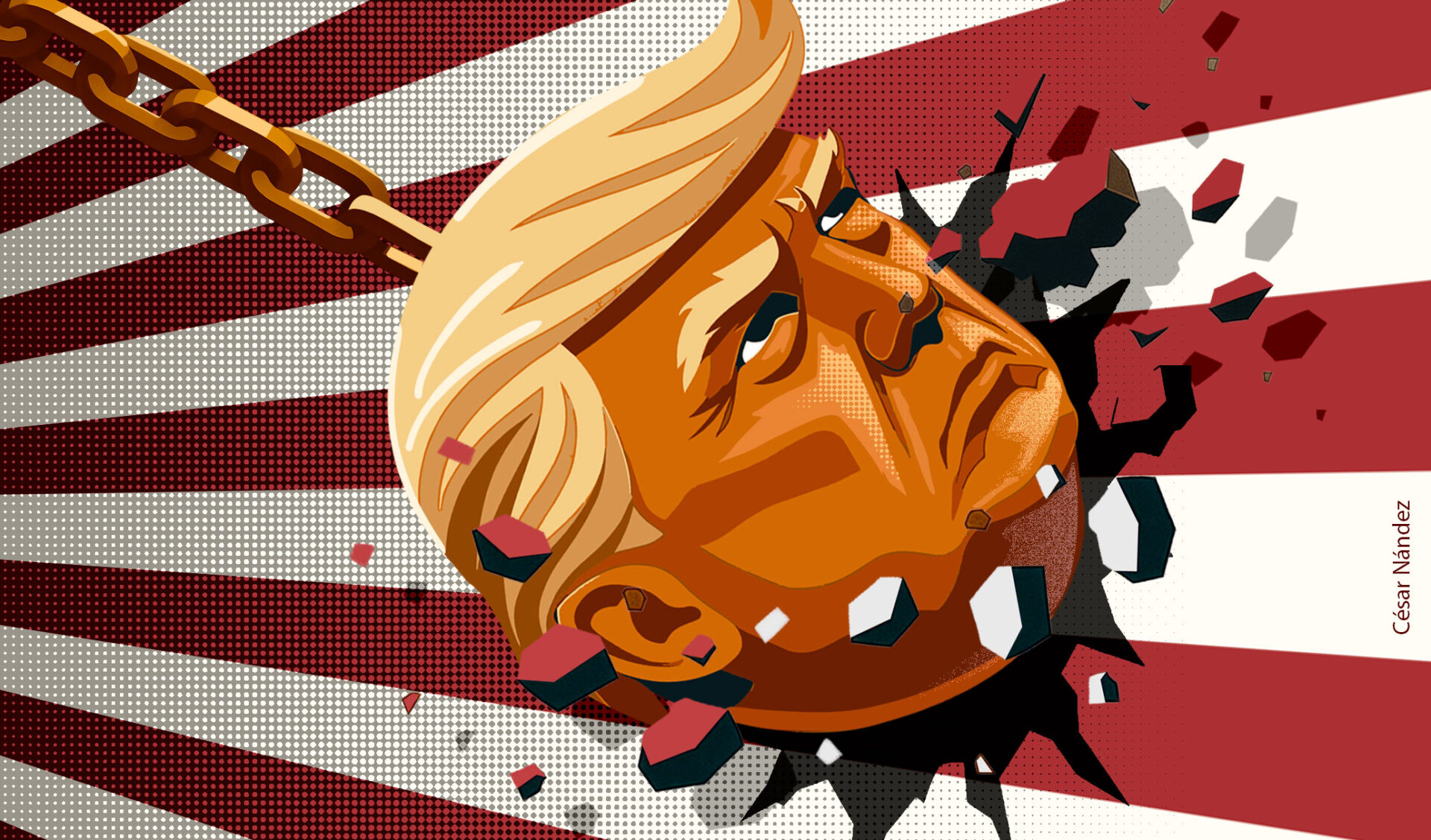Donald Trump has begun the total demolition of the East Wing of the White House. He promised not to do so, but did it anyway. His idea is to make room for the construction of a ballroom of monarchical style and proportions. We are certainly far from Benito Mussolini’s attempts to rebuild Rome or Napoleon III’s remodeling of Paris, yet it is not common for elected U.S. leaders to destroy a significant part of the “people’s house.” This dismantling of a section of the White House is perhaps the most fitting symbol of Trumpism in power — that is, a blend of post-fascist spectacle aesthetics and the use of unauthorized, illegal actions to destroy democratic institutions from within.
Donald Trump has been president for only nine months, but a combination of erratic behavior and deeply ideological actions is transforming the U.S. government into an autocratic regime. This is quite new in modern U.S. history. Trumpism is, and always has been, a political cult of the leader — one that embodies a mixture of lies, ignorance, and violent extremism. It is a form of far-right populism that borders on fascism.
Trump and the Republican Party are reshaping the American political system in their own image, manipulating the U.S. Constitution to the breaking point. Are we moving from a period of democratic erosion to one of controlled demolition?
Since last January, the U.S. democratic system has been under attack by Trump, supported by a Republican-led Congress and legitimized — albeit gradually — by a Republican-dominated Supreme Court. More specifically, Trump is destroying democracy through three interrelated mechanisms: first, the centralization of the federal government; second, the subversion of the rule of law; and third, the consolidation of autocratic legalism. These three processes are deliberate, not accidental, and their intended outcome is the transformation of the United States from a constitutional democracy into an electoral autocracy.
Trumpism upholds the “unitary executive theory,” which maintains that the President of the United States is the sole authority over the executive branch. According to Trump, presidential authority is plenary — an absolute and exclusive dominion over the entire federal government. This includes all federal employees, as well as the regulation-making and internal procedures of every department and agency. Beginning in January (under the direction of his then-confidant, tech oligarch Elon Musk), Trump initiated a massive restructuring and reform of the federal government by firing around 15% of all civilian federal employees.
Trump’s attack on the rule of law consists in the extensive use of executive discretionary power over immigration, national security, and foreign policy to restrict civil rights.
Under Trump’s administration, the Immigration and Customs Enforcement agency (ICE) became the most heavily funded security agency in U.S. history. It expanded its detention capacity to over 200,000 migrants — with a budget nearly double that of the entire federal prison system — and a recruitment drive that will double the size of the FBI. Since late January, ICE has terrorized thousands through raids on schools, universities, workplaces, and homes; its agents have abducted migrants, residents, and U.S. citizens while masked, in plain clothes, heavily armed, and without judicial warrants.
All foreigners in the United States are potential targets for deportation whenever the executive deems them risks to national security, harmful to U.S. foreign policy, or simply of “immoral character.”
Both the centralization of the federal government and the subversion of the rule of law are essential to the success of the third mechanism: the consolidation of a legal autocracy. Trump’s instrumentalization and politicization of law and legal procedure undermine the checks and balances of the U.S. constitutional order, paving the way for its transformation into an authoritarian regime.
Through the use, abuse, and neglect of the law, Trump can persecute those he considers internal enemies of the nation — and personal enemies. Trump has blamed the “radical left” for America’s national and cultural decay, for opposing and attempting to erase the Christian and traditional values that supposedly defined America’s greatness. For Trump and the Republican Party, the “radical left” is cultivated and legitimized by progressive media, universities indoctrinating “cultural Marxism,” and liberal elites in Democrat-run cities.
Trump allowed the Federal Communications Commission (FCC) to approve the merger between Paramount and Skydance Media after the former agreed to settle a lawsuit in Trump’s favor and cancel a late-night comedy show critical of him. The Trump administration has suspended and withdrawn federal funds from numerous universities to pressure them into abandoning DEI (diversity, equity, and inclusion) policies, changing their curricula, and even expelling students and faculty with progressive or “un-American” views, according to him.
In the first nine months of his second term, Trump has deployed National Guard troops in Los Angeles, Washington D.C., Memphis, Portland, and Chicago to assist ICE and other federal agencies in immigration raids and other policing operations, as well as to protect them from protesters. Addressing senior military officials, Trump stated that the U.S. armed forces must be ready to fight the “internal enemy” and described American cities as “training grounds.”
Considering that the administration has issued a new strategy to counter organized political violence — defining the internal enemy as “antifascist, anticapitalist, anti-American, and an advocate of extremism in migration, race, and gender matters; and hostile toward those who uphold traditional American stances on family, religion, and morality” — Trump could well declare a national emergency and deploy troops to suppress protests against ICE or even against himself, such as the recent No Kings Protest, one of the largest demonstrations in U.S. history.
As history has shown with previous extremist and authoritarian movements, both fascist and populist, many of these supporters will eventually realize they have believed in false promises and lies. The question is: when?
The history of the 20th century — and the events following January 2025 — offer aspiring fascists a clear path toward authoritarianism and the establishment of an essentially anti-democratic regime. The demolition of democracy is not necessarily an isolated event, but rather an agonizing process that can accelerate in its final stages.
*Machine translation proofread by Janaína da Silva.















